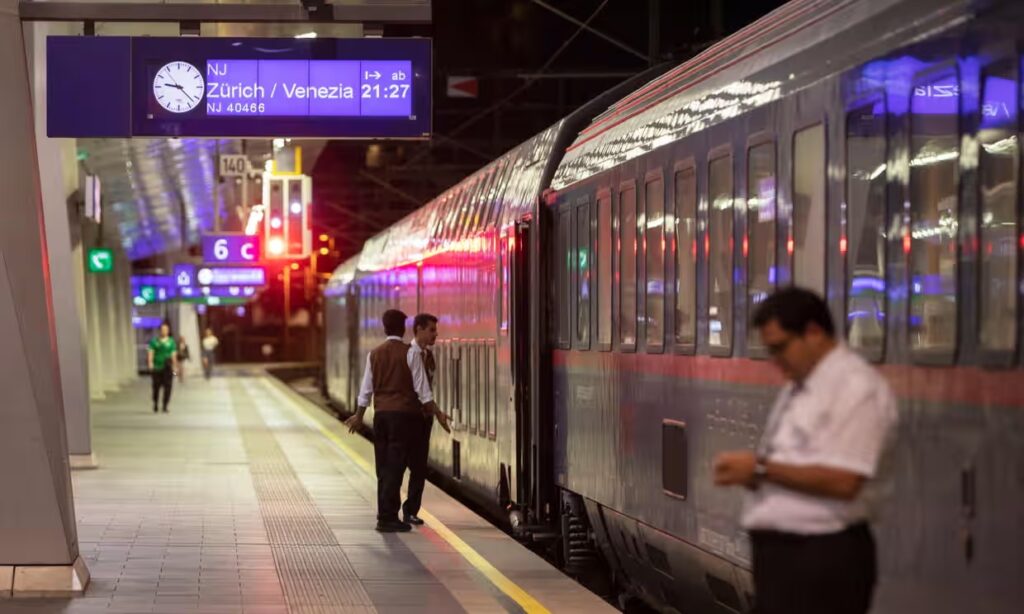European governments have “systematically” shrunk their railways and starved them of funding while pouring money into expanding their road network, a report has found.
The length of motorways in Europe grew 60% between 1995 and 2020 while railways shrank 6.5%, according to research from the German thinktanks Wuppertal Institute and T3 Transportation. For every €1 governments spent building railways, they spent €1.6 building roads.
“This is a political choice,” said Lorelei Limousin, a climate campaigner with Greenpeace, which commissioned the report. “We see the consequences today with the climate, but also with people who have been left without an alternative solution to cars.”
The report found the EU, Norway, Switzerland and the UK spent €1.5tn (£1.29tn) between 1995 and 2018 to extend their roads – but just €0.93tn (£0.8tn) to extend their rail networks.
In the four years that followed (2018-21), the average gap in investment in rail and road decreased from 66% to 34%. During that time, seven countries invested more in rail than roads – Austria, Belgium, Denmark, France, Italy, Luxembourg and the UK – while the rest spent more on roads than rail.
Dr Giulio Mattioli, a transport researcher at the Technical University of Dortmund, who was not involved in the study, said: “Most European countries have been actually encouraging car use by investing large amounts of public money into expanding motorway infrastructure.”
In the public and political debate, Mattioli added, small investments into bike lanes and railways were heavily scrutinised while investments in roads were taken for granted. “This absolutely needs to change if we are to meet climate mitigation targets in the transport sector.”
The report found motorways grew most in Ireland, Romania and Poland, and least in Lithuania, Latvia and Belgium. In 15 of the 30 countries studied, the lengths of motorways more than doubled over the 25-year period.
At the same time, the report found, European governments had shut down more than 2,500 train stations since the mid-90s. They also closed about 8,523 miles (13,717 km) of regional passenger railway lines. As a rough estimation, the researchers said, 4536 miles of these lines could be reopened “relatively easily”.
The EU plans to cut its greenhouse gas emissions by 55% by the end of the decade from 1990 levels but has failed to make any headway in its transport sector. Road transport was responsible for three-quarters of the sector’s emissions in 2020. Only in 2029 will domestic transport emissions drop below 1990 levels, the European Environment Agency found last year. Emissions will continue to rise from planes and ships that travel between the EU and other parts of the world.
Greenpeace called on governments to move money away from roads and towards railways, public transport, cycle lanes and pavements. It also demanded an end to all new motorways and airports.
Limousin said: “To help people shift from cars to public transport, which is really key to cut the emissions of transport, we need to make the infrastructure fit for that challenge. We need the government to stop closing train lines and stations, reopen those which have been closed and that we can easily reopen … and massively increase the public funding in real solutions.”
A handful of European countries have introduced cheaper public transport tickets to encourage people to shift from cars to trains, trams and buses. In Germany last summer, the government introduced a €9-a-month ticket for local and regional public transport, which it later raised to €49 a month.
Mattioli said: “The €9 and €49 German tickets have given many the impression that people would shift to public transport if it were cheaper. But levels of service and infrastructure networks are much more important for modal shift. So I think we should be talking less about fares and a lot more about infrastructure.”
Source : The Guardian


